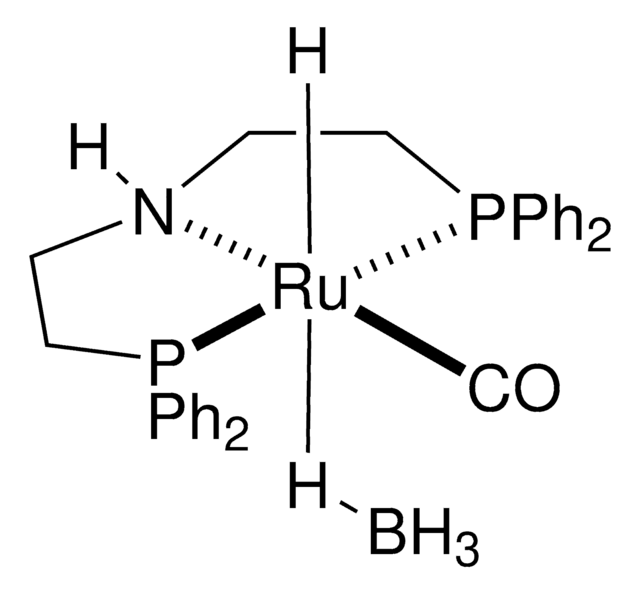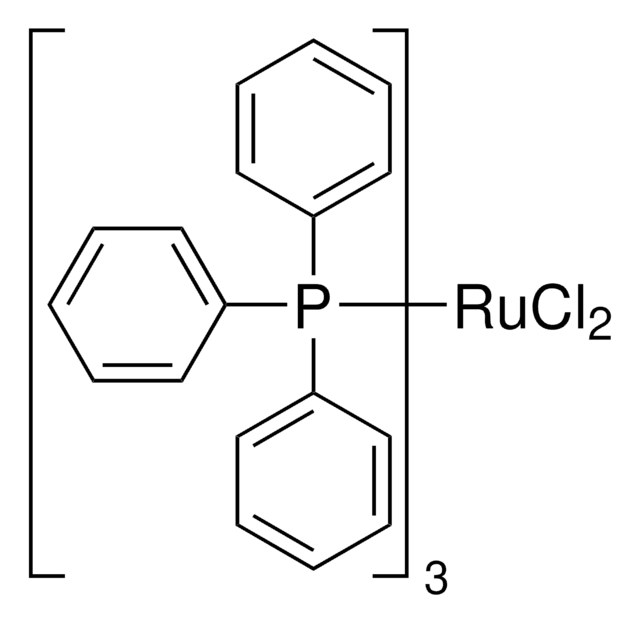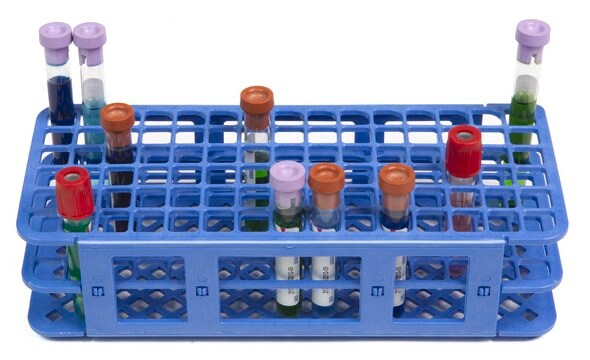739103
Ru-MACHO®
Synonyme(s) :
Carbonylchlorohydrido{bis[2-(diphenylphosphinomethyl)ethyl]amino}ethyl]amino}ruthenium(II), {Bis[2-(diphenylphosphino)ethyl]amine}carboynlchlorohydridoruthenium(II)
About This Item
Produits recommandés
Forme
solid
Niveau de qualité
Pertinence de la réaction
core: ruthenium
reagent type: catalyst
Pf
260-290 °C
Chaîne SMILES
Cl[Ru].[C-]#[O+].C(CP(c1ccccc1)c2ccccc2)NCCP(c3ccccc3)c4ccccc4
InChI
1S/C28H29NP2.CO.ClH.Ru/c1-5-13-25(14-6-1)30(26-15-7-2-8-16-26)23-21-29-22-24-31(27-17-9-3-10-18-27)28-19-11-4-12-20-28;1-2;;/h1-20,29H,21-24H2;;1H;/q;;;+1/p-1
Clé InChI
GQFWSAKCCNATEV-UHFFFAOYSA-M
Application
<li><strong>Dehydrogenative Intramolecular Macrolactonization:</strong> Ru-MACHO catalyst is applied in dehydrogenative intramolecular macrolactonization of dihydroxy compounds, demonstrating its efficiency in organic synthesis with potential implications for pharmaceutical synthesis (Jamdade et al., 2022).</li>
<li><strong>Acceptorless Dehydrogenation of Methanol:</strong> Employing Ru-MACHO catalyst in the acceptorless dehydrogenation of methanol to produce carbon monoxide and hydrogen, this process highlights Ru-MACHO′s capability in catalytic transformations and green chemistry applications (Kaithal et al., 2021).</li>
<li><strong>Precapture and Hydrogenation of CO2:</strong> A study on the heterogenized Ru-MACHO catalytic systems for pre-capture and hydrogenation of CO2 into methanol, underscoring the catalyst′s potential in sustainable chemical processes (Szego et al., 2023).</li>
<li><strong>Pressure-dependent Hydrogenative Depolymerization:</strong> The Ru-MACHO catalyst is used for highly selective pressure-dependent hydrogenative depolymerization of polybutylene succinate, demonstrating the catalyst′s versatility in polymer processing and chemical recycling (Johnson et al., 2024).</li>
</ul>
Informations légales
Mention d'avertissement
Warning
Mentions de danger
Conseils de prudence
Classification des risques
Eye Irrit. 2 - Skin Irrit. 2 - STOT SE 3
Organes cibles
Respiratory system
Code de la classe de stockage
11 - Combustible Solids
Classe de danger pour l'eau (WGK)
WGK 3
Point d'éclair (°F)
Not applicable
Point d'éclair (°C)
Not applicable
Faites votre choix parmi les versions les plus récentes :
Déjà en possession de ce produit ?
Retrouvez la documentation relative aux produits que vous avez récemment achetés dans la Bibliothèque de documents.
Articles
Learn about Ester Hydrogenation from MilliporeSigma. The reduction of esters to alcohols is typically accomplished using metal hydrides. While effective, it comes at the cost of stoichiometric waste and complicated workup procedures.
Notre équipe de scientifiques dispose d'une expérience dans tous les secteurs de la recherche, notamment en sciences de la vie, science des matériaux, synthèse chimique, chromatographie, analyse et dans de nombreux autres domaines..
Contacter notre Service technique



![Dichlorotriphenylphosphine[2-(diphenylphosphino)-N-(2-pyridinylmethyl)ethanamine]ruthenium(II) 97%](/deepweb/assets/sigmaaldrich/product/structures/303/584/056e7e0c-3dde-4c68-9250-78fed40d37cb/640/056e7e0c-3dde-4c68-9250-78fed40d37cb.png)
![Dichlorotriphenylphosphine[bis(2-(ethylthio)ethyl)amine]ruthenium(II) 97%](/deepweb/assets/sigmaaldrich/product/structures/355/871/c9ac8b63-9a77-4c66-b545-cb7c41673aa4/640/c9ac8b63-9a77-4c66-b545-cb7c41673aa4.png)


![[1,3-Bis(2,4,6-trimethylphenyl)-2-imidazolidinylidene]dichloro(benzylidene)bis(3-bromopyridine)ruthenium(II)](/deepweb/assets/sigmaaldrich/product/structures/261/898/e64eea4e-5a09-4c7d-b400-c43b3517de2a/640/e64eea4e-5a09-4c7d-b400-c43b3517de2a.png)

